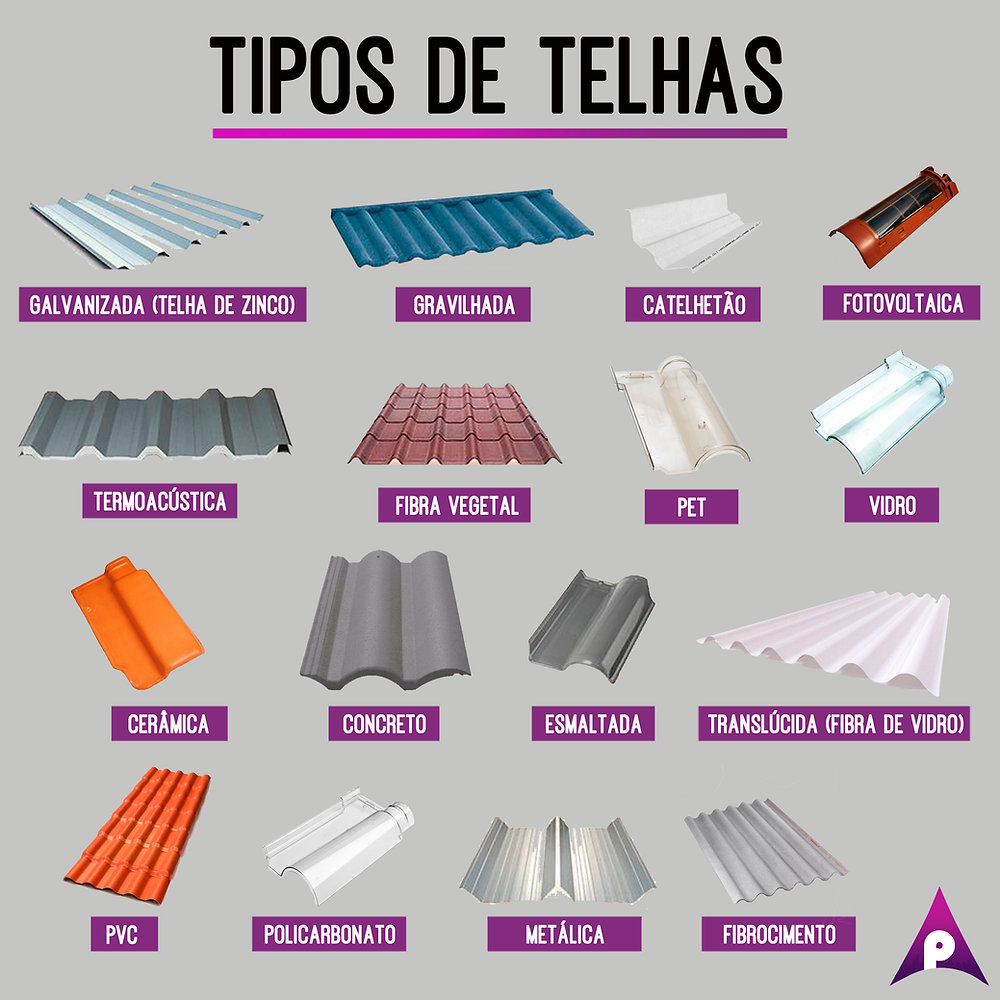Table of contents
Choosing the right tile for your home helps provide thermal comfort, lightness, luminosity, and beauty to your home. Ceramic, clay, glass, PVC, plastic, ecological... There are several materials used in the creation of tiles, and each one has its own characteristics and style. Therefore, not to make a mistake when creating your project, it is necessary to take some care.
Remember that each project has a particular style and concept, so the ideal is that the type of tile be thought of from the beginning - and not only when the construction is almost ready. Observe if the desired material matches the roof model and the climate of the region. Some tiles are resistant to bad weather, while others may not resist a strong windstorm.In addition, it is essential to observe the slope of the roof and follow the minimum slope indicated by the roof tile manufacturer.
The most common types of tiles and their characteristics
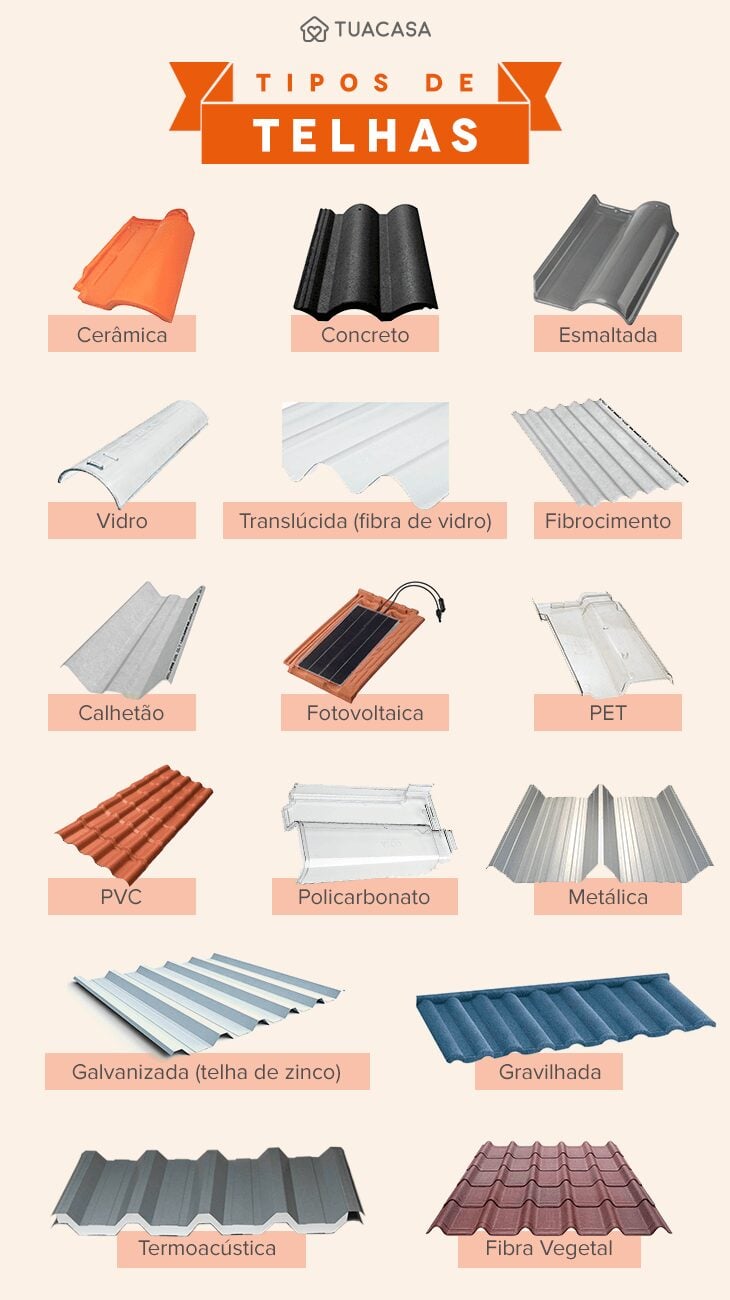
Found in different models, roof tiles are also made of different materials. Each one of them has advantages and disadvantages and different uses and applications. When choosing the ideal material for you, observe the characteristics of each one of these types of roof tiles and see what best suits your project, budget and climate. Check out the most common types found in constructionBrazilians:
1. ceramic

Ceramic roof tiles, also called clay tiles, are the most common in Brazil. Probably you only need to look around and you will find several roofs with this type of material. Due to this popularity, they are easy to find on the market, and there is a great diversity of shapes and models.
Some of its advantages are that it provides thermal insulation, is easy to clean and inexpensive to maintain. 15 to 17 tile units are used to cover a square meter of roof. Unfortunately, this type of material also has disadvantages. Ceramic tiles are heavy, around 40 kilos per square meter, and therefore need a sturdy and durable crating.Besides, they are more permeable than cement ones, which can facilitate the proliferation of mold or fungus.
See_also: 70 double bedrooms with wallpaper to inspire you to decorate yours2. concrete
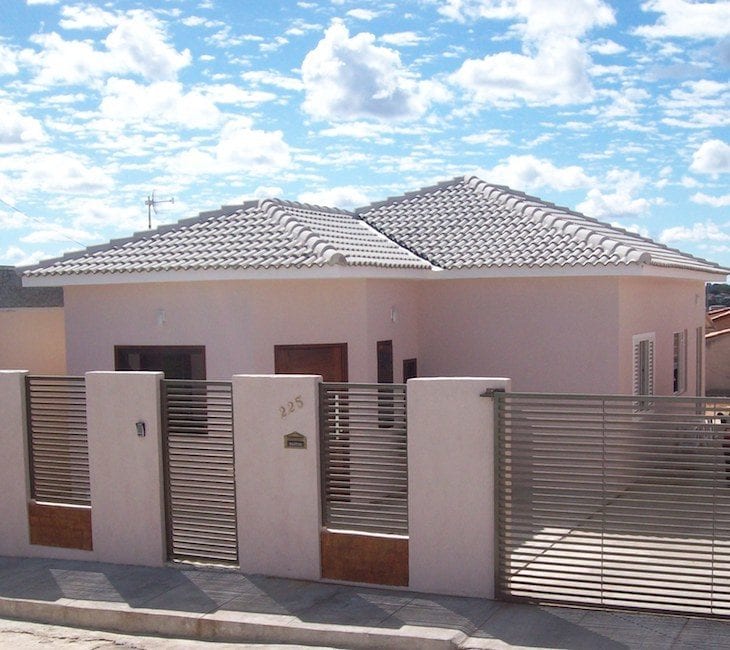
They are composed of a mixture of cement and sand, and just like the ceramic options, are durable and provide thermal comfort. The consumption is 10 to 15 units per square meter and the minimum inclination is 30 to 35%. Besides being found in different models and shapes, they also have a variety of colors. They are more impermeable than ceramic tiles, but heavier, beingAnother disadvantage is that they have low wind resistance.
3. enameled
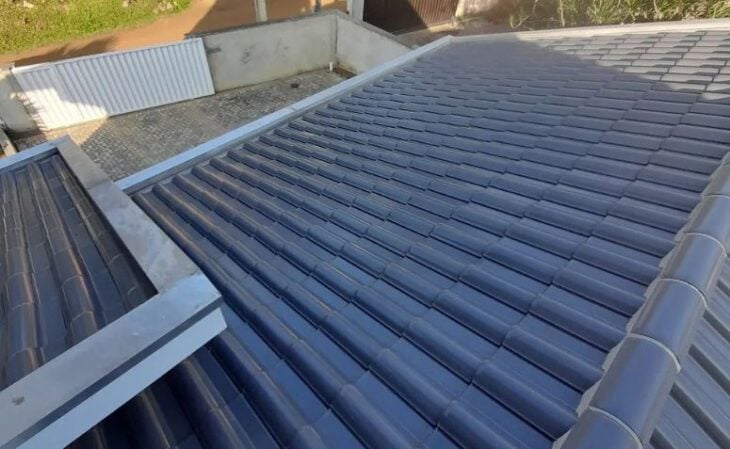
For those who want a ceramic tile roof, but with the possibility of choosing different colors, enameled tiles are ideal. They are made of ceramics and receive a colored layer called vitreous. This process allows for a variety of colors and ensures greater strength and durability to the tile.infiltrations and the appearance of mold and mildew.
Each side of the tile can have a different color, so it is common to use this type of material in places where it is possible to see the roof from the inside of the house - that is, places without a lining. Thus, it is possible to combine the inside with the decoration and the outside with the façade. As not everything is perfect, the cost of this type of tile is higher than that of ceramic tile.
4. glass
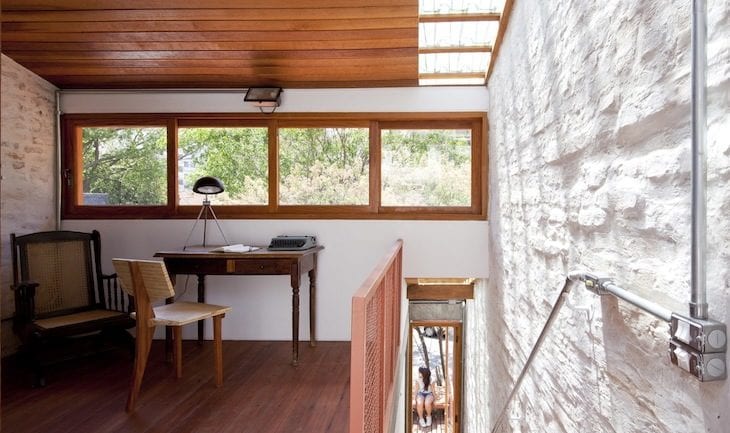
Glass tiles provide lightness and allow natural light to enter. They are usually used in combination with ceramic or concrete tiles, so they are made in the same models as these two. To take advantage of natural lighting, they must be used in unlined environments. The disadvantage is that they are fragile and can crack quite easily.
5. translucent (fiberglass)

For those looking for a cheaper option than glass, this is a good bet. translucent roof tiles are made of fiberglass and are found in transparent or translucent models, and can be colored or not. just like glass, they provide natural lighting and help save electricity, but with the advantage of being lighter and easier to handle. they are flexible andThis is why they are often used in industries.
6. fiber cement
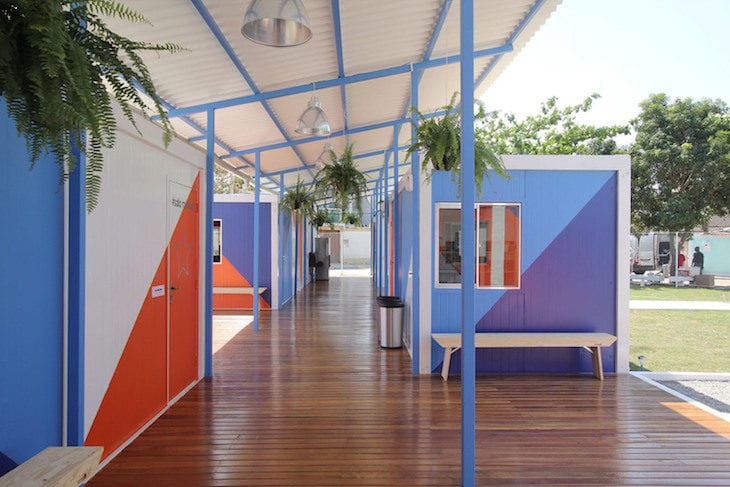
Fiber cement emerged to replace asbestos, a material that was widely used in the manufacturing of corrugated roof tiles, but is harmful to human health. They are light, durable, inexpensive, and resistant tiles, which do not need a reinforced support structure. They are sold in sheets that are 1.22 meters wide by 2.44 meters long, and can be found in several models and thicknesses.
Another advantage is that they can be installed in places with a low inclination (minimum 15%). They also have a good cost-benefit ratio. A disadvantage is that they absorb heat very easily and can make the internal environment hot. To solve the problem, it is necessary to build a lining or a slab.
7. calhetão

They are shingles made of fiber cement, but instead of being wavy as is usual for this type of material, they have a different shape and great length. For this reason, they are widely used in free spans, between 3 and 9 meters, such as industrial warehouses, schools, parking lots, and clubs. They allow the roof to have a minimum inclination of 5% and are resistant, durable, and light.
8. vegetable fiber
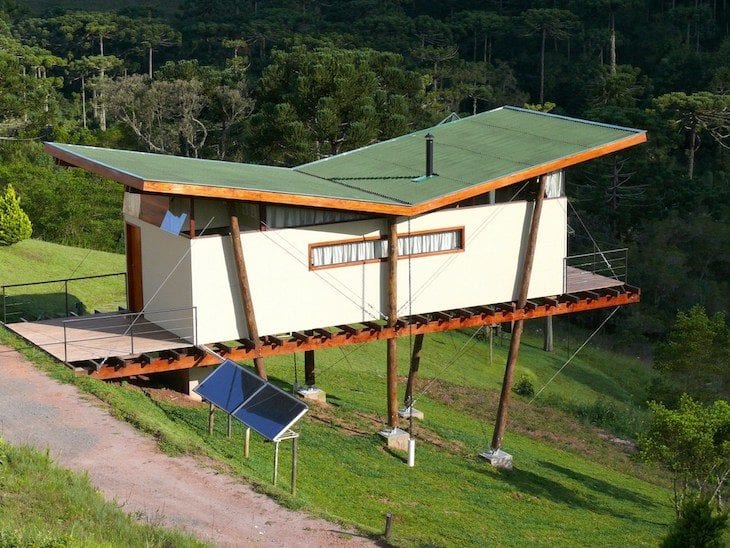
Today the market already offers a range of ecological roof tiles, perfect for sustainable constructions. one of these tiles is the vegetal fiber, created from cellulose fiber, which is extracted from recycled paper, and then receives pigments, resulting in models of different colors. finally, it is covered with a special resin, which will guarantee protection to the piece, just like fiber cement,this type of tile has been used to replace the asbestos options, but with the advantage of being ecologically sustainable. they are light, easy to install, and resistant to weather conditions.
See_also: 40 models of small sofas for your living room9. PET (recyclable)

These tiles are also ecological and made from recycled materials. This type of tile is created from PET bottles, and does not emit polluting gases into the atmosphere during its manufacture. They are resistant and light, so they do not need reinforced structures to support their weight, decreasing the cost of construction. They withstand high temperatures and are not porous like ceramic tiles, decreasing the cost of construction.It is possible to find them in models similar to the ceramic and concrete options and in several colors, including translucent.
10. PVC

Much lighter than concrete, ceramic, metal, and fiber cement, PVC tile is versatile, easy to clean, and easy to install. There are PVC colonial tiles in several colors, including transparent ones.
This type of material is resistant to fire and weather changes, such as strong winds, storms and hail. In addition, it has the advantage of being recyclable, at the end of the tile's useful life it can be recycled and transformed into a new tile. Compared to ceramic or concrete models, PVC tiles are not good thermal or acoustic insulators, and may leave the internal environmentTo try to reverse the problem, it is possible to use a blanket between the roof and the ceiling.
11. polycarbonate

The polycarbonate roof tiles are malleable, light and fire resistant. Its main characteristics are resistance and transparency. It has efficient thermal protection and anti-UV protection, with a filter that avoids the passage of ultraviolet rays (preventing the pieces from yellowing or losing transparency) and that guarantees a longer useful life than fiberglass or PVC tiles.When performing cleaning and maintenance, care must be taken not to scratch the plates or corrode the material. Therefore, never use abrasive products.
12. metal
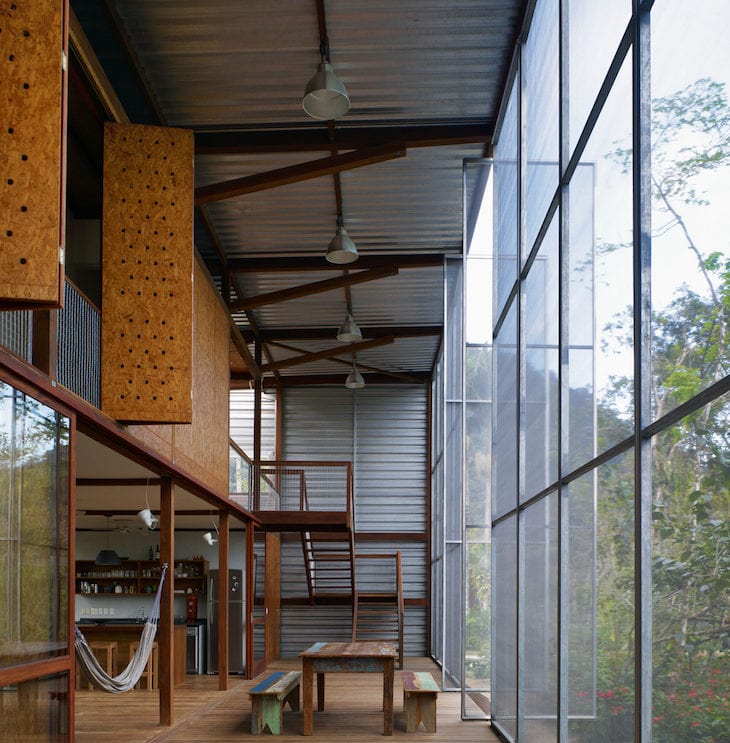
Resistant, durable and light, metal tiles are found in sheets and can be made of steel, aluminum, copper or a metal alloy. One of their great advantages is that they are able to overcome large spans, which is why they are most often used in commercial or industrial construction. They need to be installed with fasteners, which can be visible or not. They have medium to long durability.long term, depending on the material.
13. galvanized (zinc roofing tile)
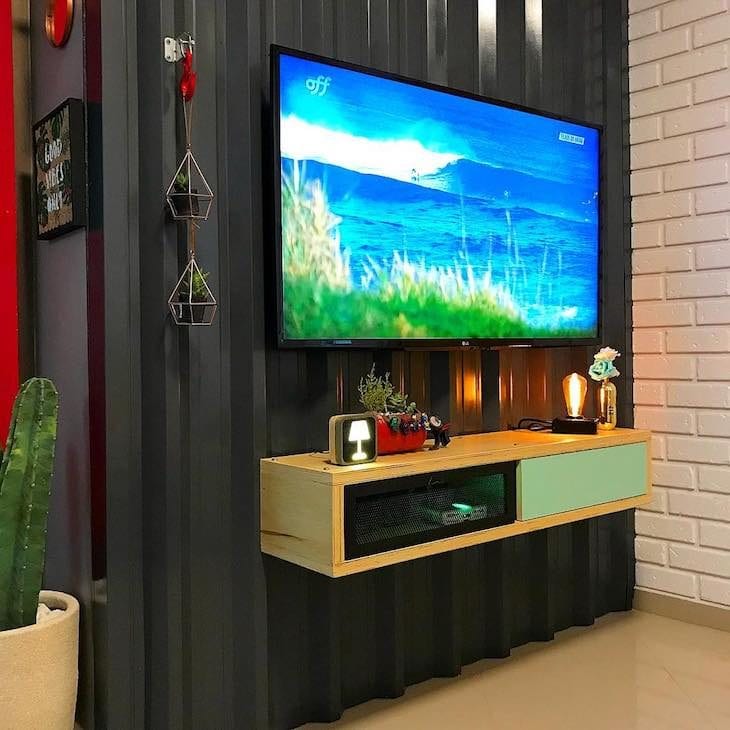
The main characteristic of this type of tile is that they combine the durability of steel with zinc protection, which prevents rust. They are metallic tiles coated with an aluminum and zinc alloy to make them resistant to corrosion and weather conditions, such as strong winds and storms. A major disadvantage is that they have poor thermal insulation. To reverse this problem, it isIn addition, this type makes a lot of noise during the rain, a problem that can also be reversed with the use of a barrier.
14. engraved

If you are looking for a tile that is both beautiful and utilitarian, look out for gravel tiles. This is a type of metal tile covered by a layer of ground rock with a ceramic finish. They provide thermal comfort and are visually similar to ceramic or concrete tiles. They do not absorb moisture, do not radiate heat, and are resistant to weather conditions such assnow, frost, strong winds, etc. In addition, they are easy to install, as they do not require a reinforced structure.
They are found in slabs and in three different models: Roman, shake, and French. Instead of being fitted together, like the concrete and ceramic ones, the gravel ones are screwed. Amidst so many advantages, this type of material has as a disadvantage the cost, which is higher than the ceramic and concrete options.
15. thermoacoustics

They are known as sandwich roof tiles, because they are composed of two steel or fiber cement tiles filled with a thermal insulating material (polyurethane, Styrofoam, glass wool or rock wool). It is possible to find them in several colors on the market, such as gray, blue or red. The great advantage is the thermal and acoustic insulation, providing a silent environment and a pleasant temperature. IfCompared to ceramic or concrete tiles, they are much lighter and much better thermal and acoustic insulators.
16. photovoltaic
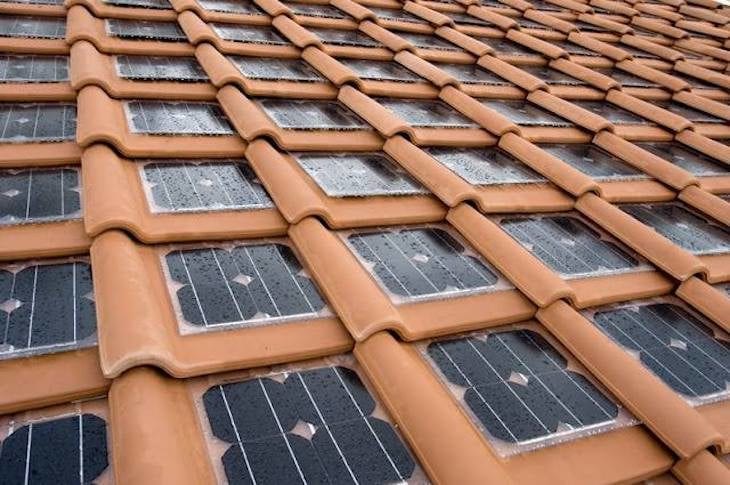
Who has never wanted to stop worrying about the electricity bill? This type of roof tile is a new technology, which is now arriving in Brazil. They are ceramic tiles with embedded photovoltaic cells. The objective is to generate energy without giving up aesthetics. For this, all the wiring goes under the roof and is connected to a converter. The energy generation is 3kw per 40 square meters.roof.
Climate, budget, model, and roof pitch: these are all aspects that must be observed when choosing a type of roof tile. Besides following these requirements, if carefully thought out and designed, your roof can bring more comfort, beauty, and safety to your home.

